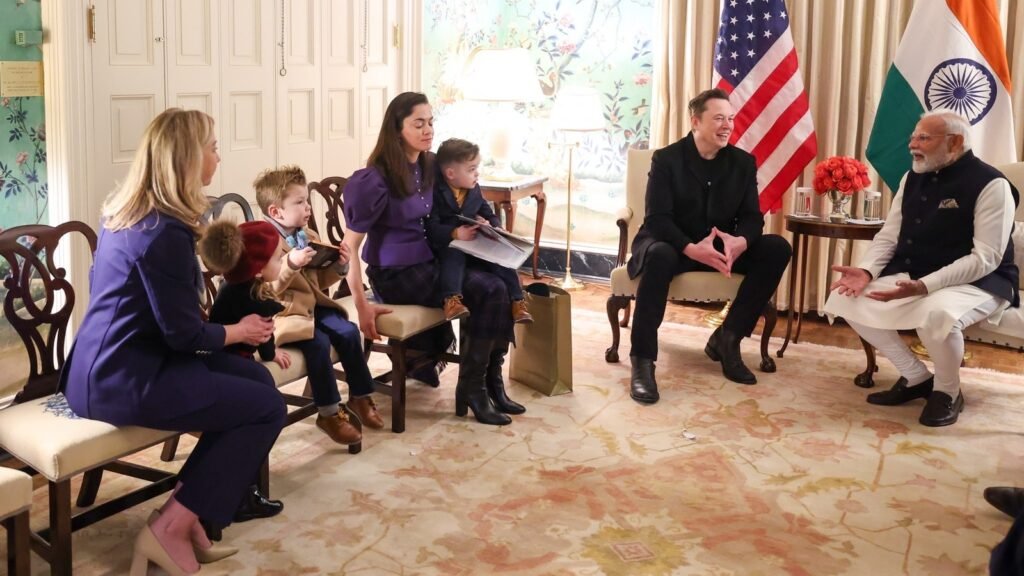
Chandrababu Naidu Wants More Professional Women to Join the Workforce. To do this, the Andhra Pradesh Chief Minister said in a linkedin post, The state will expand work from home (wfh) Opportunities “in a big way, especially for women.”

The idea, he continued, is to provide “Equal and full access to growth options” particularly in stem (Science, Technology, Engineering and Medicine). Post pandemic, he pointed out, there has been a shift to remove work, co-warting spaces and neighborhood workshops that “Create flexible, productive work environments.”
Naidu’s comments are welcome for several reasons. First, It Acknowledges The Challenges that Women Face in the Workplace. Second, it seems to take note of the missing women in labour force participation. And third, it seeks a solution designed to be women-friendly.
But, Well-Intectioned as It is, WHETHER WFH is the magic bullet women need to enable green great workforce participation is Questionable. Certainly, flexible work is one of the factors that make employees more attractive for some women, but it is not the only one.
“It is not enough for employers to provide green flexibility,” Prof Ashwini deshpande who heads the economystments at Ashoka University Told Me. “We need also to talk about sharing domestic chores
Wfh is not a solution, adds Prof Farzana Afridi after the Economics Department at the Indian Statistical Institute, delhi “Because it reinforces norms that Women Need to Balance Domestic Work Domestic Work DEME DOLEG WORK WORK WORK WORK WORK WORK WOMEN NEED It adversary restrictions their Empowerment because you are still restricting them to the home. “
At the height of the Pandemic, I Remember Interviewing K Who Nervously Asked Me Not to Name Her. Work from home, then relatively new, was not working out for her, she said. Earlier there was definite boundaries between home and office. Now it was all a big blur. “I can never switch off,” She said. “I can’t wait to get back to the office.”
Working it

Five Years after Covid Forced The World to Retreat and Shelter at Home, WFH Remains Perhaps The Most Impactful Acronym of that Era.
So impactful that it is still making news. In the US, companies are cracking the whip and isesuing memos to return to office, or else. After Laying Off some 1,000 Employees, JPMORGAN Chase Ceo Jamie Dimon is not Budging from What the Business Press Calls His Rigid Back-to-Office Memo. At Amazon, Staff has been ordered back to the office five days a week. A recent global survey by kpmg, found that four-fifths of bosses expect a return to the office five days a week with the next the next three years, Reports the economist,
President Donald Trump Weighed in on One of his first executive decisions after taking office. “Nobody’s gonna work from home,” He said. “They’re gonna be Going out, Playing TennisPlaying Golf. ” Federal Government Employees, He Made It Plain, will have to return to work five days a week.
Things are somewhat different in India where what was assumed to be a stop-gap arrangement, has remrined or commonly, morphed into hybrid work.
Hybrid work, Says Gaurav Seth, Managing Director, India, Pederson and Partners, A Global Executive Search Firm, Sems Set to Stay in the Forseeable Future and In Sector Like and Shared Services OS). “The general feeling is that coming into work two days a week is enough for team work and team bonding,” said seth, who Himself Goes into Office Two Days A Week.
Such Work Arrangements, He Said, Had Given flexibility to not just just women but also men. “There’s a feeling that they are saving on commute time and out in a sense even be more productive when work from home.”
Neelam Vats, A Lawyer Who has Co-Founded Her Own Practice, Remembers Chucking Up Her Job With A Busy Law FIRM To JOIN IBM Back in 2006 Bacause She Had A One-OLED AEAR-LOD BABABY. “They offered flexible working hours and wonds,” She says recalling how 15 days after joining she discovered She was pregnant with her second child. “I felt so embarrassed. I thought they would think I had concealed this from Them. But they said congratulations and it was fin. ” But for flexible work, she says, she would have quit.
Not all new moms are thrilled with option. Long Considered a Rising Star in Her Company, S* was grateful for the flexible working arrangement she came to with her bosses on her bosses once her maternity Leave was overs. But, She Says, She Worries About Being Judged When, For Instruction, She Can’t Make it to a Zoom Call Because Her Baby Has Fallen Sick or Her Helper Couldn’t Make It To Work. “I’m don’t know how this is being performed back in the office,” She said.
How to make it work

Although it’s seen a Decent Rise in the Post Pandemic Years, India’s Female Labor Force Participation at 37% is Still Bell Bell Bell Bell Below The Global Average of 47%, Thoughtly Higher Higher In 2015-16 Urvey of 2018.
But, Warns Farzana Afridi, The Recent Bump is Cauded in Large Part by Rural Women Working Unpaid and Helping on his family farms. “The quality of this work is very poor with eernings or earnings less than even casual work,” She said.
Barriers Restricting Women’s Employment Remain. Chief of these is housework. According to analysis in 2022 by Hindustan Times, Unpaid Care Work Keeps 43% of Women out of the Labor Force; Just 1.5% of men.
In the absence of formal part-time work options, women who seek to balance domestic responsibilities with professional employees often end up with procarious work. As indiaspend reportsOver 17 Million Women Home-Based Workers in India Are Not Covered by Social Security or a National Policy.
While Chandrababu’s push for work from home is not a complete answer, but it is at least a beginning that offers a counter-narrative to the push for 90-heruour Ahmanyan.
If naidu is serial about getting more women into employment, then he should continue the conversation. A good place to pick up would be to talk about infrastructure such as transport and childcare. Equipping and training women with modern skills would be a good idea. And, definitely, he might want to consider Paternity Leave, Not just a token few weeks but shared parental leave





